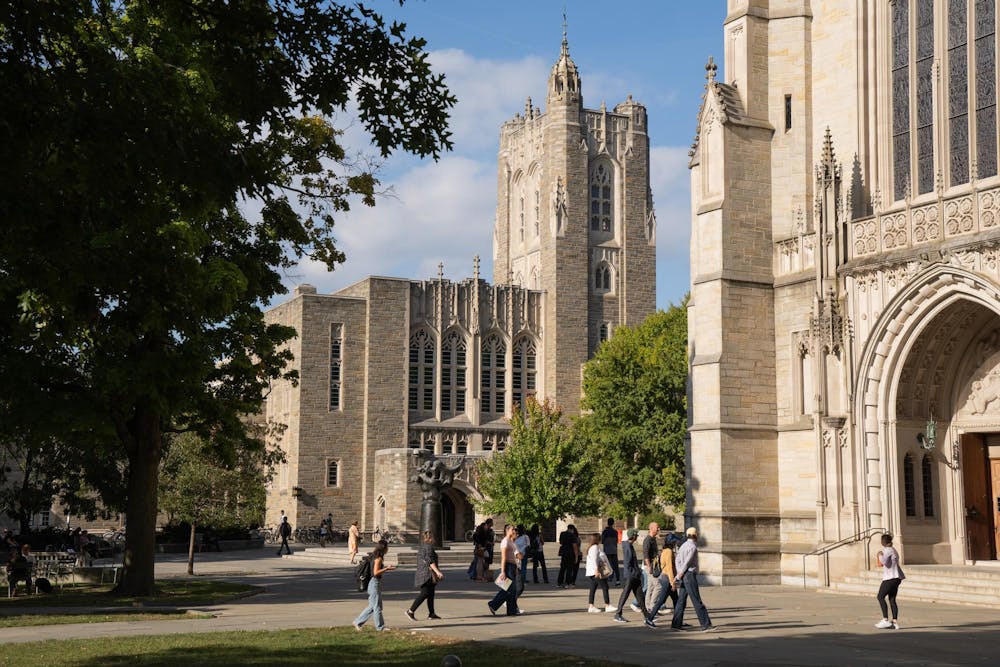Many students hoping to get into SML 201: Introduction to Data Science this semester were left disappointed. By the middle of the last week of the add/drop period, 244 people were waiting to grab a spot on TigerSnatch for a class with fewer than 160 enrollees.
The Daily Princetonian analyzed the 15 most-requested courses of the semester as reported by TigerSnatch subscription analytics.
The most ‘snatched’ courses are fairly evenly spread across distributional requirements. Literature and the Arts (LA) stands out, with the Creative Writing courses dominating. CWR 204: Creative Writing (Fiction) had 219 snatches, and CWR 202: Creating Writing (Poetry) had 172 snatches. Historical Analysis (HA) is the only distribution requirement without representation in the top 15.
Lecturer Day Yi, who teaches SML 201, attributes the course’s high demand to growing industry interest in AI.
“The demand might indicate students are favorably adopting the course content, the industry trends especially in the AI space, and the teaching efforts of our instructors,” Yi wrote. “We have a great group of core faculty at CSML who have laid the foundation for this demand long before I arrived here.”
The demand for these courses, however, has spelled difficulty for both professors and students, often exceeding the maximum roster size of the class.

Physics professor Jason Puchalla, who teaches PHY 108: Physics for the Life Sciences, wrote in an email to the ‘Prince’ that there are two sides to teaching a course with more interest than can be satisfied. PHY 108 had 177 people awaiting openings on TigerSnatch.
“I’m delighted the class has been well received by students, but the enrollment stress means I have mixed feelings,” Puchalla wrote. “I’m thankful I’ve been able to have a positive impact on so many exceptional students since our department first offered the class. That said, PHY 108 has grown into a complicated element of the curriculum.”
As such, one of the most challenging aspects of teaching these courses is choosing which students to accept from their extensive waitlists. Professors must carefully balance class function with satisfaction, and, in certain cases, consider students who need the courses to graduate.

Puchalla spoke about the complex and difficult process involved in selecting students off of the waitlist.
“Many students hope to use the class to help prepare for the MCAT, others are potentially away the following year, and some reveal last minute that they are seniors who won’t graduate unless they get in,” Puchalla said. “Seniors who need the class to graduate are considered first. Then come students who have been locked out several times (I keep a lot of emails) and complicated cases I’m informed of by deans and departments.”
Puchalla claimed that, after that, he used a lottery to fill remaining spots.
“Telling so many students this year that there are no more seats in the class was disheartening and incredibly frustrating,” he added.
Professor and Director of Graduate Studies in Musicology Elizabeth Margulis teaches MUS 248: Music Cognition, which had 136 TigerSnatch subscriptions. Speaking about the student selection process, Margulis wrote, “We try to add people as fairly as we’re able, based on how the class fits into their goals and plans and how long they’ve been on the list.”
While seniority is generally the primary factor considered when selecting students off of the waitlist, there are exceptions.
With 111 students on the waitlist and only 15 spots available, ANT 232: Love — Anthropological Explorations has the highest waitlist-to-class-size. Aina Marzia ’28 was accepted into the class after contacting the course instructor, Professor Thalia Gigerenzer.
“I didn’t initially get the class because it was taken by seniors, but I emailed the professor as a freshman about my earnest interest for the class’s content and she gave me permission to enroll,” Marzia said. “The ethnographic aspect of the class really interested me. I knew I wanted to take it as someone who wants to major in Anthropology; plus who doesn’t want talk about love, even if it’s academically. It teaches you a lot.”
Yi acknowledged the challenges the relatively young Center for Statistics and Machine Learning faces in managing the unprecedented demand, often requiring faculty members to juggle multiple responsibilities.
“We are not a large department — in fact, we aren’t even a department — and so our thin resources create challenges in managing the enrollment at the start of the semester. Many of us wear several hats in keeping this course from falling apart,” Yi wrote. “This creates much extra work for us — the instructors and administrators. The quality to quantity ratio can suffer as a result. I’m a movie buff, so I refer to a quote from Hyman Roth (The Godfather, Part II) — ‘this is the business we’ve chosen.’”
These challenges come despite general increases in maximum enrollment sizes for these courses since the Spring 2022 semester.
The highest percent maximum enrollment size increase occurred in POL 396: International Organizations, in which enrollment increased by 230 students: a 135 percent jump. The course had 127 students subscribed on TigerSnatch, waiting for a course opening.
The add/drop period officially ended on Friday, Feb. 7 at 11:59 p.m. Many courses on the top 15 list in Tiger Snatch are still overenrolled.
Griffin Hon is a staff Data writer for the ‘Prince.’
Please send any corrections to corrections[at]dailyprincetonian.com.








